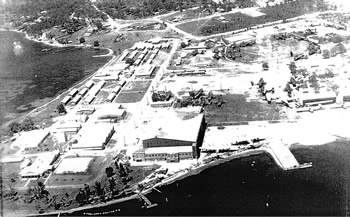Personal memories of RAAF Rathmines
Greg Piper ANZAC 2009 » more
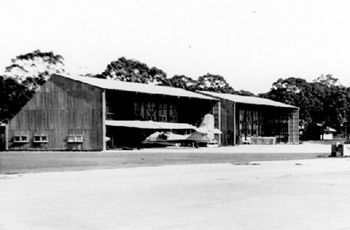
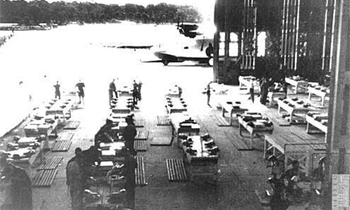
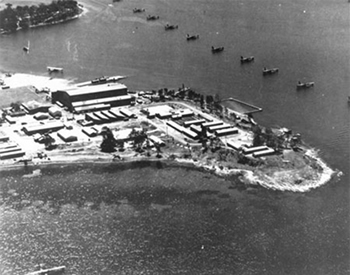
Rathmines during the war
Rathmines today
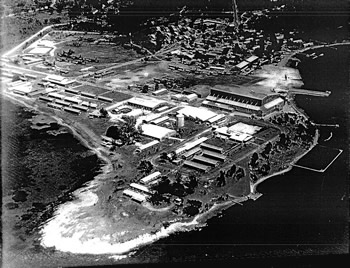
(Above and Right) Aerial photo of RAAF Rathmines, probably taken 1945, either just before or just after the end of WWII
Rathmines and the Catalina
During July 1938, No 5 Squadron (renamed No 9 Squadron on the 1 January 1939), which was based at RAAF Base Point Cook, was sent to investigate landing areas and sites around the Lake Macquarie area for the establishment of a base and the eventual move of the squadron. In September 1939, camp was set up, and arrangements were made to rent local cottages as living quarters. The base, with Wing Commander J.E. Hewitt in command, became operational when 9 Squadron transferred from Point Cook to Rathmines, with Seagull flying boats.
Catalina flying boats arrived at the Base in February 1941, and by September 1943 the base comprised 14 Catalinas, two Seagulls, a Dornier and a Dolphin. During training, many personnel brought their families to live in the towns and villages near the Rathmines base which influenced the establishment of other services such a school and post office.
The RAAF Base at Rathmines became the largest RAAF flying boat base in the southern hemisphere. Lake Macquarie was an ideal site as it is Australia’s largest saltwater lake and is four times the size of Sydney Harbour with 175km of shoreline.
At various stages during World War II, Rathmines housed Nos. 9 (Walrus), 11, 20 and 43 (Catalina), 40 (Sunderland and Martin Mariner), 41 (Dornier Do 24K, Mariner and S23 Empire) and 107 (Kingfisher) Squadrons. The Rathmines RAAF seaplane base played a pivotal role in the defence of Australia in World War II and its flying boats were involved with the mining of Manilla Harbour and played an important part in the Battle of the Coral Sea. The base reached its peak strength of almost 3,000 RAAF personnel in 1944-45. It comprised 230 buildings and marine facilities and there were forty aircraft in service.
As well as being was a vital repair centre, it was also a centre for training, housing the Operational Training Unit (No 3 OTU) for Catalina crews and in all provided training to over 200 crews during the war. New flying boats, made in the USA, were flown to Rathmines and were then converted for operational duties.
Between 1941 and 1952, the RAAF operated a total of 168 Catalinas, with the RAAF serial number prefix A24, and these were flown by four front line squadrons, two communications units and three air-sea rescue flights. The Catalina flying boats were the only aircraft to see service with the RAAF for the total wartime operations against Japan. In January 1952, after the war, the Catalina was declared surplus to requirements.
Following World War II, Rathmines was used as a ground training base, and the Officers' Training School was formed there along with training facilities for senior non-commissioned officers, physical training instructors and national servicemen. In 1962, the Base was sold to the Lake Macquarie Council. Many buildings were privately purchased and removed from the site or used by Lake Macquarie Council as community halls. A large hangar, complete with electrically-operated doors, which was used for servicing seaplanes and flying boats, was pulled down and shipped to RAAF Base Richmond to house the RAAF's then-new C-130A Hercules aircraft.
The original Rathmines base has now been heritage listed by the NSW State Government and an application for similar recognition has been made to the Federal Government.
The Base has continuing social significance to WWII service personnel and to the community of Lake Macquarie, who recognise the site's history and continue to use the site, creating an evolving landscape which retains significant elements of the RAAF base.
